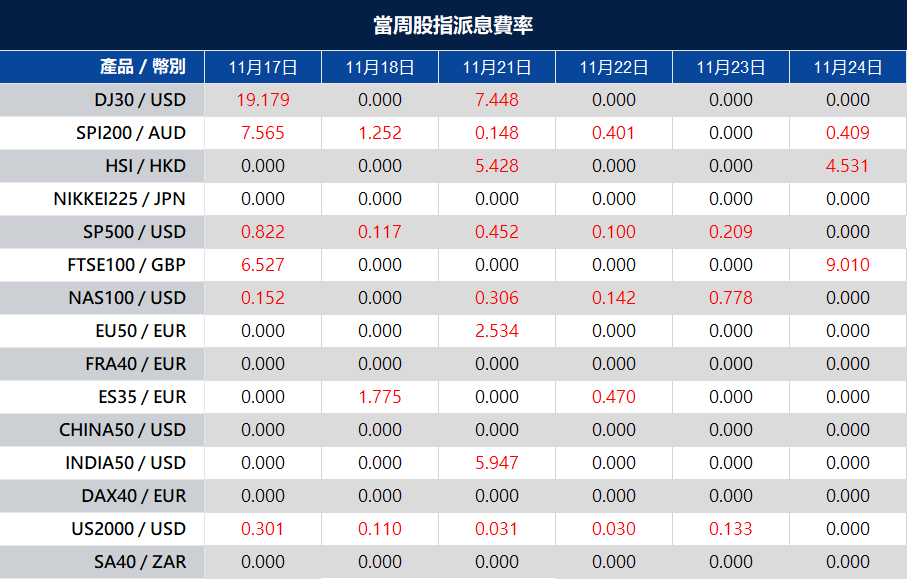US stocks advanced higher on Friday, regaining upside momentum and ended with a slight gain for the day after shrugging off Federal Reserve warnings that there was more policy tightening to come. Treasury yields rose again after hawkish comments from Fed policymakers as they reiterated their commitment to taming inflation down.
St. Louis Fed President James Bullard said that interest rates are not sufficiently restrictive and needed to rise at least 5%-5.25% to curb inflation. On the economic data front, the US Existing Home Sales for October plunged 5.9%, which came below a 4.17% increase estimated by analysts and was mainly caused by the Federal Reserve’s tightening monetary conditions as they try to curb stubbornly high inflation. However, market sentiment remains positive throughout the session on the back of soft CPI, and PPI October reports.
On the Eurozone front, European Central Bank (ECB) President Christine Lagarde said that the central bank is committed to bringing down medium-term inflation to 2% by escalating interest rates.

The benchmarks, S&P 500 and Dow Jones Industrial Average both edged higher on Friday as the S&P 500 posted decent gains amid falling chances for a consecutive 75 basis point (bps) rate hike by the Federal Reserve. The S&P 500 was up 0.5% daily and the Dow Jones Industrial Average climbed slightly higher with a 0.6% loss for the day. Nine out of eleven sectors in the S&P 500 stayed in positive territory as the Utility sector and the Real Estate sector is the best performing among all groups, rising 2.00% and 1.29%, respectively. The Nasdaq 100 meanwhile was little changed with a 0.3% loss on Thursday and the MSCI World index was down 0.6% for the day.

Main Pairs Movement
The US dollar advanced higher on Friday, preserving its upside momentum and extended its daily gains towards the 107 level amid a deterioration in market sentiment that did not last much. The greenback is posting modest weekly gains after more signs of a slowdown in inflation and better-than-expected retail sales numbers. The market focus now shifts to the release of the US Durable Goods Orders data on Wednesday and the FOMC meeting minutes on Thursday.
GBP/USD climbed higher on Friday with a 0.22% gain as the cable flirted with the 1.1880~1.1900 area amidst a risk-on impulse. On the UK front, the UK Retail Sales for October, rose by 0.6% MoM, coming in better than expected despite the Bank of England (BoE) acknowledging the UK economy entered a recession. Meanwhile, EUR/USD retreated slightly from a daily high and finished the day in the 1.0320 price zone amid a stronger US dollar across the board. The pair was down almost 0.36% for the day.
Gold declined lower with a 0.55% loss for the day after retreating from a daily high towards the $1750 mark during the late US trading session, as additional Fed officials emphasized the need for higher interest rates after two soft October inflation reports. Meanwhile, WTI Oil dropped sharply with a 2.04% loss for the day.
Technical Analysis
EURUSD (4-Hour Chart)

The EURUSD was wandering around the 1.0350 level during the US trading session as the US dollar regather strength and climbed above 106.68 as of writing. The pair was struggling to make a decisive move in either direction and fluctuating in its weekly range above 1.0300. While speaking at the Frankfurt Financial Conference, European Central Bank President (ECB) Christine Lagarde reiterated that they expect to raise rates further to levels needed to ensure that inflation returns to the 2% medium-term target. However, Lagarde’s hawkish comments failed to provide support for the Euro. The October Existing Home Sales data, which measures the change in the annualized number of existing residential buildings that were sold during the previous month, printed 4.43M compared to the market expectations of 4.38M and the previous 4.71M, with a -5.9% change. The pessimistic figures reminded investors of the downturn in the housing market, weighing on the US Dollar after a few minutes of the report release and limiting the pair’s losses.
From the technical perspective, the four-hour scale RSI indicator further traced back to 50 figures, suggesting the pair failed to find a clear direction to move. As for the Bollinger Bands, the EURUSD was pricing below the 20-period moving average and the size between upper and low bands remained small, which is a signal that the pair was amid a consolidation phase. Hence, our view is that the euro would wander between the 1.0300 to 1.0475 area shortly.
Resistance: 1.0475, 1.0604
Support: 1.0298, 1.0167, 0.9953
GBPUSD (4-Hour Chart)

The GBPUSD regained upside traction and climbed above 1.1900 following a sharp decline with the initial reaction to the UK’s Autumn Budget. On Thursday, British Chancellor Jeremy Hunt announced that they will be introducing a total of £55 billion in tax rises and spending cuts in the Autumn Budget. “Today’s statement delivers a consolidation of £55 billion and means inflation and interest rates end up significantly lower,” Hunt added. Which triggered heavy selling on the British Pound and the pair tumbled by more than 1% on Thursday. Apart from this, it’s also worth noting whether the UK’s fiscal policy will allow the Bank of England (BoE) to adopt a less-aggressive policy-tightening approach. Nevertheless, the negative impact of the budget on the cables faded away quickly, suggesting that investors are yet to decide how the fiscal policy will influence the monetary policy. Moreover, the Retail Sales released earlier in the day were surprisingly above forecasts, even though the Bank of England acknowledged the UK economy entered a recession. Retail sales for October rose by 0.6% MoM against 0.3% estimates.
From the technical perspective, the four-hour scale RSI indicator remained the 54 figures as of writing, suggesting that the pair is amid mild upside traction. As for the Bollinger Bands, the pair was trading around a 20-period moving average with small volatile, which is a signal that the pair would put into sideway and hover in a narrow range from 1.1800 to 1.1950 shortly.
Resistance: 1.2028, 1.2145
Support: 1.1742, 1.1633, 1.1365
XAUUSD (4-Hour Chart)

The XAUUSD remained on the back foot and was set to finish the week with 1% losses, as the US Existing Home Sales plunged severely under the continuously hawkish comments by Federal Reserve. The US National Association of Realtors reported that Existing Home Sales for October plunged a staggering 5.9%, below a 4.17% increase estimated by analysts. Home sales have fallen since February of 2022 due to the Federal Reserve’s tightening monetary conditions as they try to curb stubbornly high inflation, which peaked around 9%. However, market sentiment remains positive throughout the session on the back of soft CPI, and PPI October reports. In the meantime, Fed policymakers reiterated their commitment to taming inflation down. On Thursday, Minnesota’s Fed President Neil Kashkari commented that one-month data can’t over-persuade the Fed, as it needs to keep at it until they’re sure that inflation has stopped climbing. Besides, the US Treasury bond yields, namely the 10-year benchmark note rate, rise two bps, yielding 3.795%, putting a lid on the non-yielding yellow metal.
From the technical perspective, the four-hour scale RSI indicator dropped deeper to 42 figures as of writing, suggesting that the gold was amid severely negative momentum. As for the Bollinger Bands, the yellow metal was pricing around the lower band with low volatility, which indicates the pair was struggling to make a decisive move in either direction. As a result, we think gold would get into a consolidation phase in the near term.
Resistance: 1784, 1800
Support: 1748, 1704, 1670
Economic Data
| Currency | Data | Time (GMT + 8) | Forecast |
| EUR | ECB President Lagarde Speaks | 03:30 |































